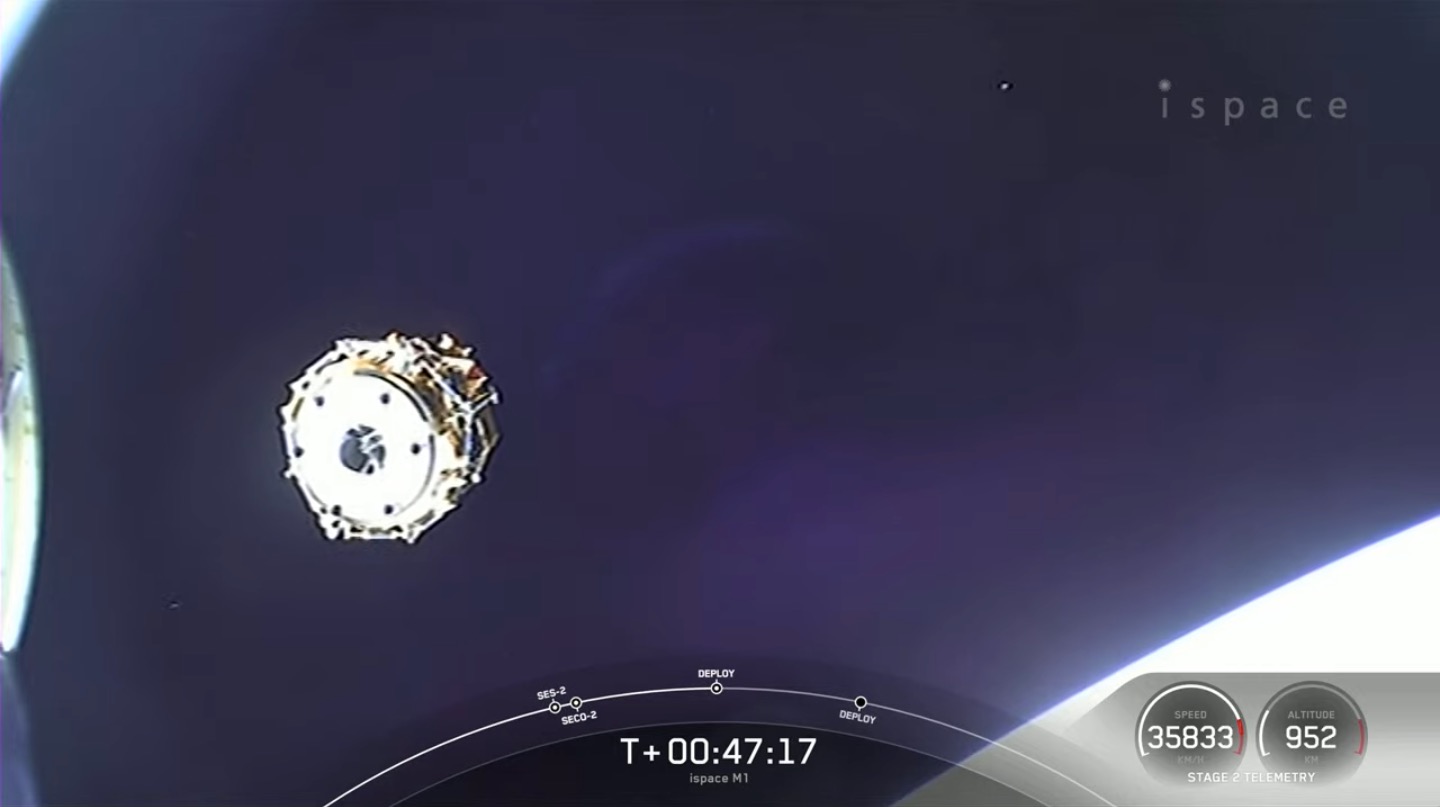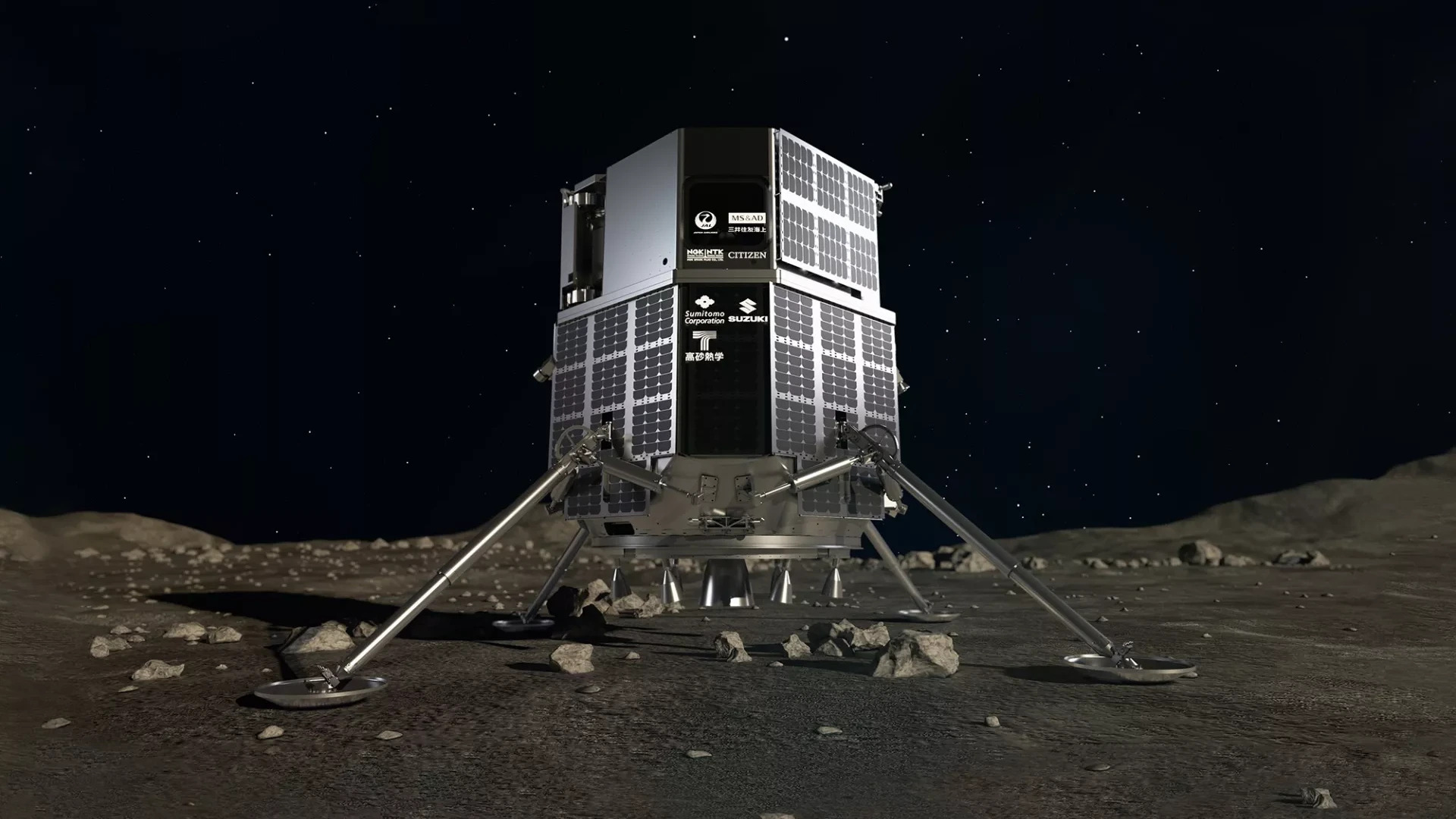A pioneering multinational moon mission is underway.
A private Japanese moon lander carrying a United Arab Emirates (UAE) rover, among other payloads, launched early Sunday morning (Dec. 11) from Cape Canaveral Space Force Station in Florida.
The Hakuto-R lander lifted off atop a SpaceX Falcon 9 rocket at 2:38 a.m. EST (0738 GMT), kicking off the first mission for Tokyo-based company ispace. If all goes according to plan, Hakuto-R will make a soft lunar landing next spring — the first ever for a Japanese-built spacecraft.
"This is a very important moment," ispace founder and CEO Takeshi Hakamada told Space.com late last month, referring to the launch and the rest of ispace's Mission 1. "It is opening a door for the commercial cislunar industry."
Lunar timeline: Humanity's exploration of the moon

A smooth liftoff
The Falcon 9 had a lot to do on Sunday morning.
The rocket's first stage came back for a landing at Cape Canaveral just over eight minutes after launch. The Falcon 9's upper stage deployed Hakuto-R as planned about 47 minutes after liftoff, then ejected a tiny NASA moon probe called Lunar Flashlight six minutes later.
Get the Space.com Newsletter
Breaking space news, the latest updates on rocket launches, skywatching events and more!
The briefcase-sized Lunar Flashlight will then make its own way to the moon, a roughly three-month trip that will end with insertion into a near-rectilinear halo orbit — the same path that will be occupied by Gateway, the small space station that NASA plans to build as part of its Artemis moon program.
Artemis aims to establish a sustainable human presence on and around Earth's nearest neighbor, and Lunar Flashlight could aid that effort: The cubesat will hunt for water ice in shadowed craters near the moon's south pole, the planned site of an Artemis base.

"We are bringing a literal flashlight to the moon — shining lasers into these dark craters to look for definitive signs of water ice covering the upper layer of lunar regolith," Barbara Cohen, Lunar Flashlight principal investigator at NASA's Goddard Space Flight Center in Greenbelt, Maryland, said in a prelaunch statement.
"I'm excited to see our mission contribute to our scientific understanding of where water ice is on the moon and how it got to be there," Cohen added.

A moon lander's debut
Hakuto-R, the main payload on Sunday's launch, will also take a long and looping trek to the moon. The lander is expected to touch down inside Atlas Crater, which is located on the southeastern edge of the moon's Mare Frigoris ("Sea of Cold"), in April 2023.
That would be an epic achievement, blazing a new trail for Japan and for private industry. To date, only the space agencies of the United States, the Soviet Union and China have pulled off soft landings on the lunar surface.
Success is hardly guaranteed, however, as ispace acknowledges. Mission 1 is a test flight with 10 milestones, and landing is ninth on that list. The tenth is operation on the moon's surface to help support customer payloads.
The most high-profile such payload is a 22-pound (10 kilograms) robot called Rashid, the UAE's first-ever moon rover. After deploying from Hakuto-R, Rashid will take photos with a variety of cameras and characterize the moon's curious, electrically charged surface environment. Its mission is expected to last one lunar day, which is about 14 Earth days.

If all goes to plan, Mission 1 will be just the beginning for ispace, which oversaw the Hakuto ("White Rabbit") team in the Google Lunar X Prize. (The Prize offered $20 million to the first private team to land a robotic craft on the moon; it expired in 2018 without a winner.)
ispace plans to launch Mission 2 to the moon in 2024 and Mission 3 a year later, Hakamada said. That third mission will be part of NASA's Commercial Lunar Payload Services program, which uses private landers to get agency science gear to the moon.
After 2025, ispace aims to launch two missions to the lunar surface every year, providing rides to a variety of payloads and helping to develop the lunar frontier.
"Our vision is to establish an economically viable, sustainable ecosystem in cislunar [space]," Hakamada said.
Mission 1 was originally scheduled to launch on Nov. 30, but SpaceX pushed things back to Sunday to perform additional checks on the Falcon 9. Mission 1 was the fifth flight for this particular rocket's reusable first stage.
Mike Wall is the author of "Out There" (Grand Central Publishing, 2018; illustrated by Karl Tate), a book about the search for alien life. Follow him on Twitter @michaeldwall. Follow us on Twitter @Spacedotcom or on Facebook.
Join our Space Forums to keep talking space on the latest missions, night sky and more! And if you have a news tip, correction or comment, let us know at: community@space.com.

Michael Wall is a Senior Space Writer with Space.com and joined the team in 2010. He primarily covers exoplanets, spaceflight and military space, but has been known to dabble in the space art beat. His book about the search for alien life, "Out There," was published on Nov. 13, 2018. Before becoming a science writer, Michael worked as a herpetologist and wildlife biologist. He has a Ph.D. in evolutionary biology from the University of Sydney, Australia, a bachelor's degree from the University of Arizona, and a graduate certificate in science writing from the University of California, Santa Cruz. To find out what his latest project is, you can follow Michael on Twitter.









